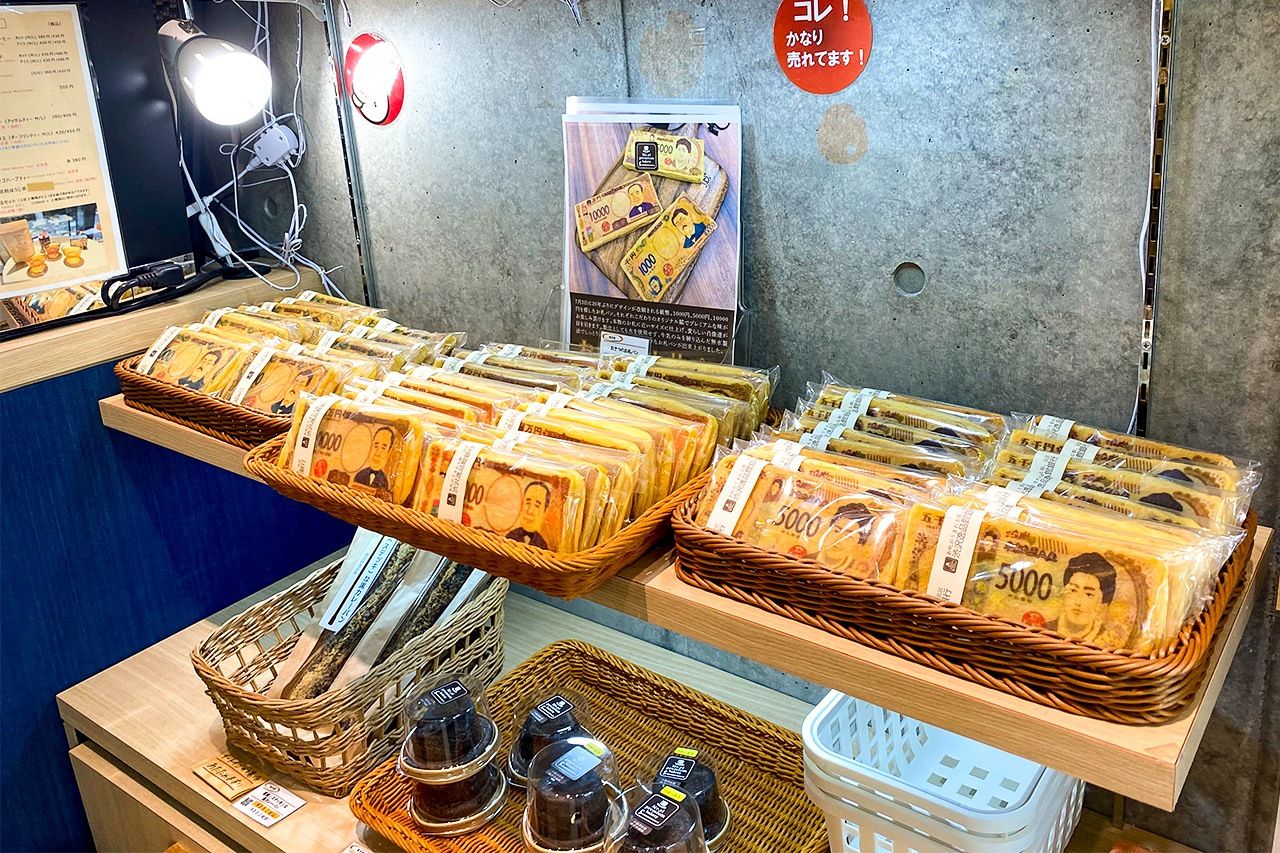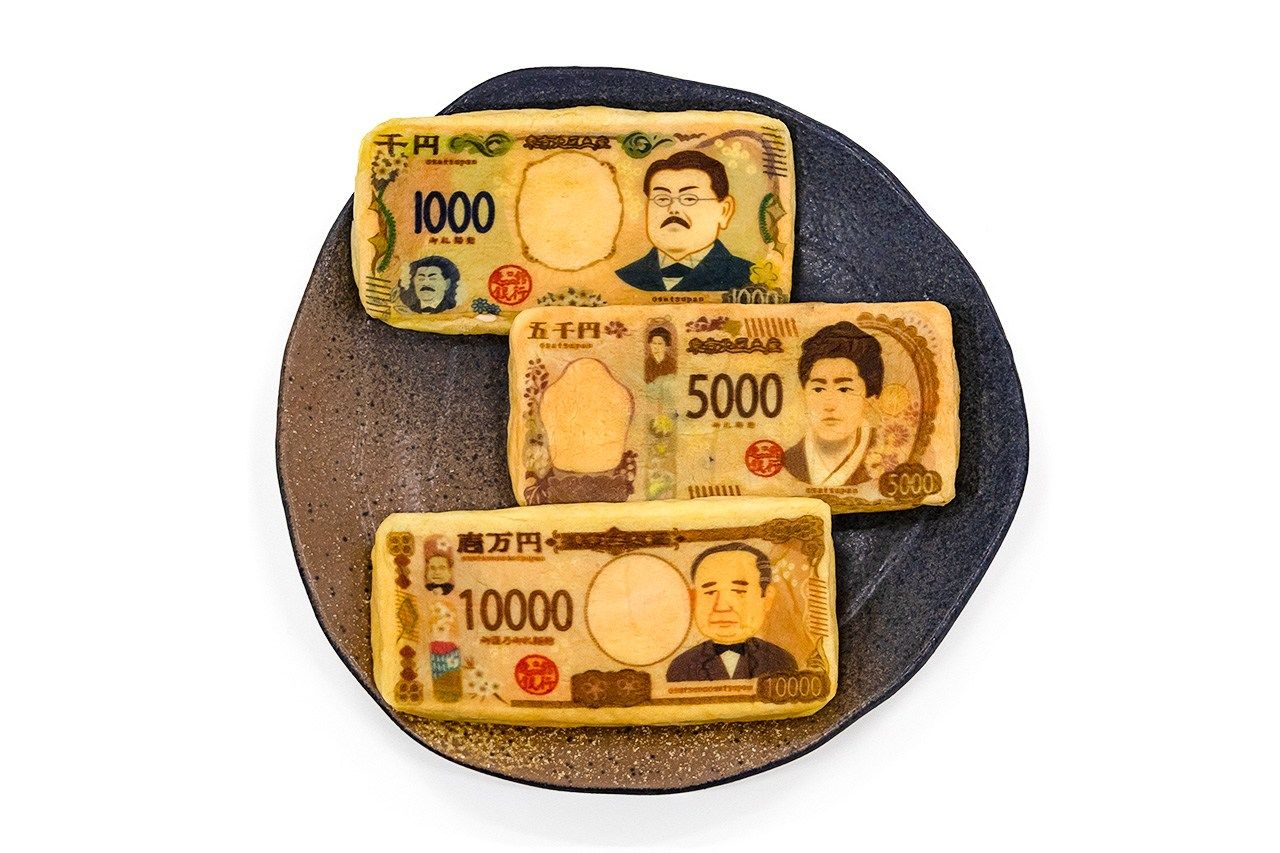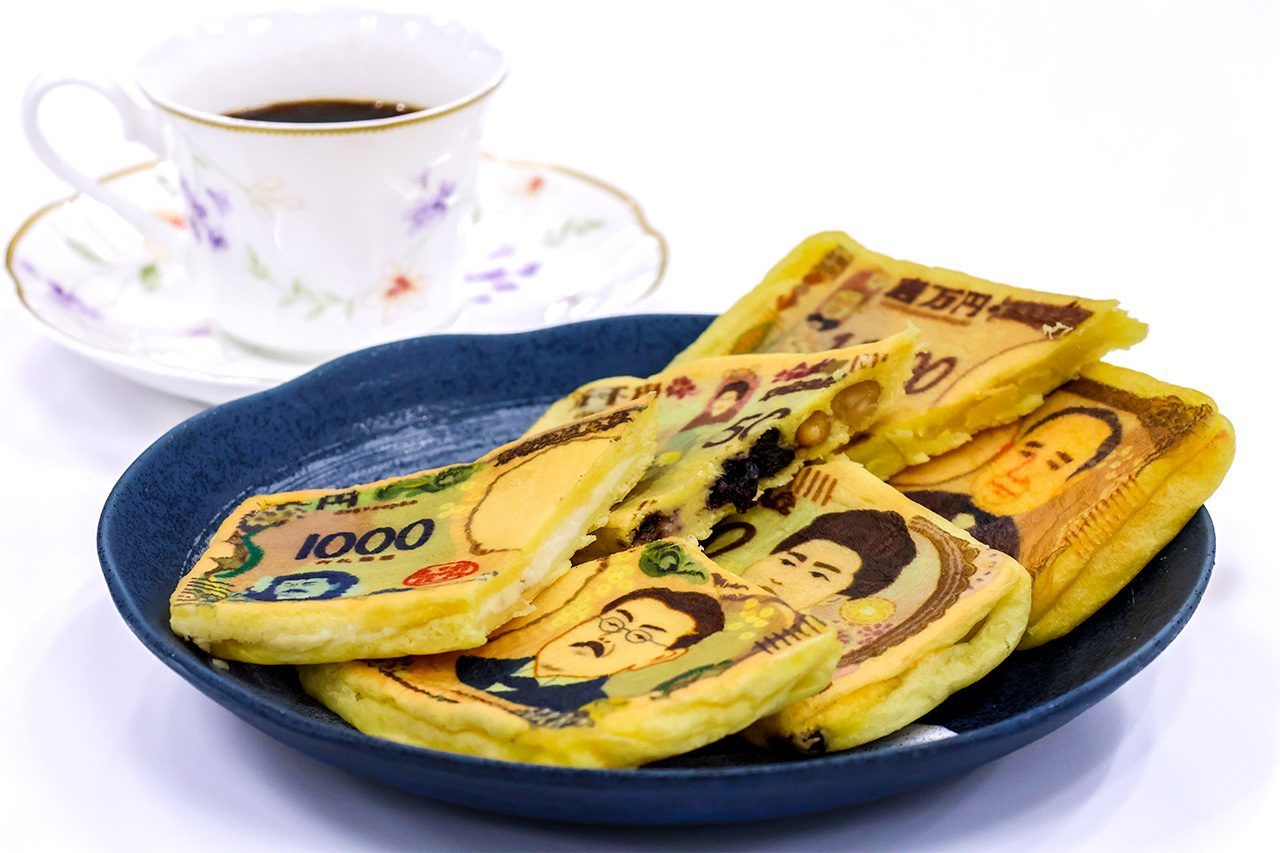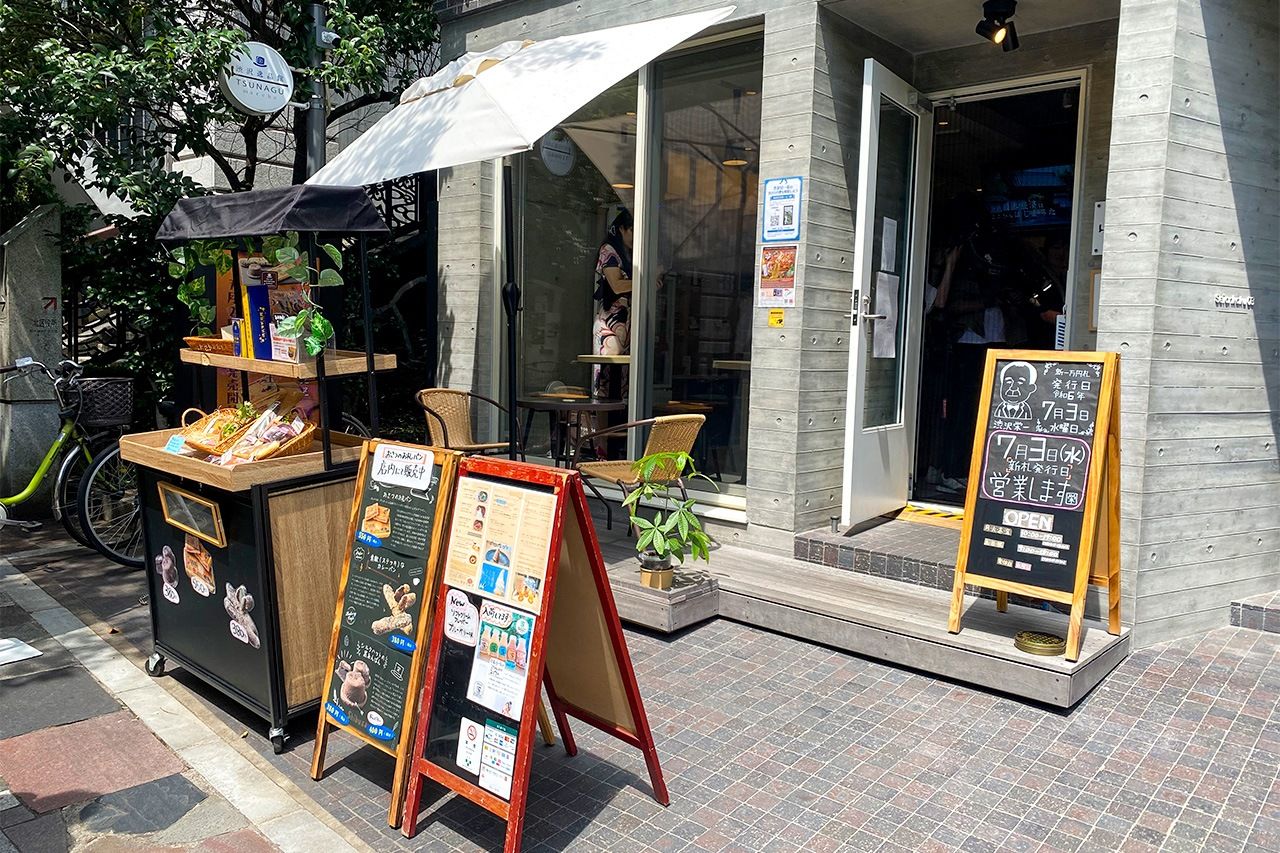Gift Shop “Mints” Snack Bread in Image of New Japanese Banknotes
Newsfrom Japan
Food and Drink Economy Lifestyle Society Guide to Japan- English
- 日本語
- 简体字
- 繁體字
- Français
- Español
- العربية
- Русский
Japan began issuing its revamped banknotes, the first redesign in two decades, on July 3. The new bills feature the portraits of business luminary Shibusawa Eiichi on the ¥10,000, educationalist Tsuda Umeko on the ¥5,000, and Kitasato Shibasaburō, a pioneer in treating infectious disease, on the ¥1,000.
To commemorate the occasion, a gift shop in Kita, Tokyo, dedicated to Shibusawa launched a line of snack breads created in the image of the banknotes. The Shibusawa Ippinkan Tsunagu Marche, which is located in an area of the capital with deep connections to the Meiji-era capitalist, spent more than six months developing its realistic osatsupan, or “banknote bread.”

Newly “minted” osatsupan. (© Nippon.com)
Ouei, the operator of the shop, came up with the idea for the snack bread to celebrate Shibusawa, who lived out the last decades of his life in the area, and to draw attention to Kita’s connection to banknotes as the home of the National Printing Bureau’s Tokyo Plant. The ¥ 10,000 osatsupan went on sale in April, with the versions bearing the likenesses of Tsuda and Kitasato added later to round out the collection.

Osatsupan are sweet and filling, but priced at ¥550 each, they won’t break the bank. (© Nippon.com)
The snack breads measure 7-by-16 centimeters and are 1 cm in thickness—the equivalent of a 100-sheet bundle of ¥10,000 notes. The outer brioche pastry is made with domestically produced wheat and butter, with each bill featuring a different filling. The Shibusawa version is stuffed with sweet potato paste—the word for the tuber in Japanese, satsuma imo, being a play on satsu, or banknote. The ¥5,000 osatsupan features a blueberry jam and peanut filling and the ¥1,000 note offers a combination of cream cheese and apple.

The detailed designs add to the enjoyment. (© Nippon.com)
Shibusawa Ippinkan Tsunagu Marche
- Seionkaku 03, Honchō 1-1-6, Ōji, Kita, Tokyo
- https://shibusawa-world.net/ (Japanese only)
(Originally published in Japanese. Banner photo © Nippon.com.)

